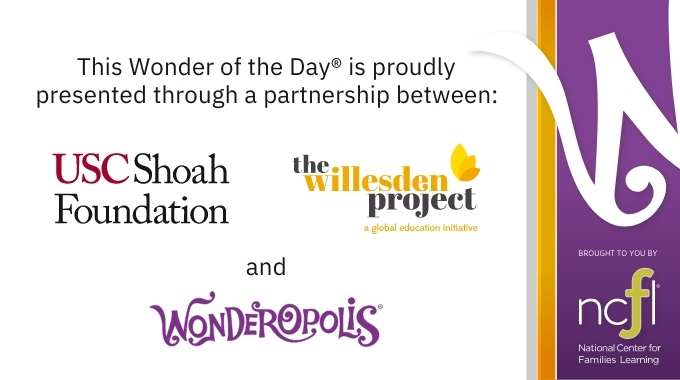Today’s Wonder of the Day was inspired by Shemar. Shemar Wonders, “Why did they collect spider webs during world war 2?” Thanks for WONDERing with us, Shemar!
During World War II many creative contributions in the areas of science and innovation happened. From medical wonders to items for fun and play, creative minds developed inventions still used today.
Can you guess one of the most unlikely helpers? If you said spiders, you would be correct! These eight-legged arachnids had a valuable purpose: spinning webs. The U.S. Army Quartermaster Corps spider web production shop collected threads to create crosshairs for weapons’ sights and other aimed gadgets. Members of the Corps used black widow spiders. Even though these spiders could be lethal, they moved slower so they were easier to work with.
Who would have thought that melon mold would help make penicillin? Invented in 1928, the first trials for this life-saving drug took place in Great Britain, but because of money and inability to mass produce, Howard Florey, Ernst Chain, and Norman Heatley looked for support in the U.S. in 1941—before the U.S. entered the war. Before D-Day—June 6, 1944, the day U.S. soldiers landed in Normandy, France in the largest sea invasion in history—scientists made 2.3 million doses of penicillin which would treat and prevent infections from injuries during the invasion. And save many soldiers’ lives. Since the war, people have been offered this life-saving medicine.
Another great invention from this time period is something that might satisfy your sweet tooth. When Forrest Mars moved to Great Britain to run the Mars Bar plant, he noticed the soldiers ate chocolate covered in a hard sugar shell. It kept chocolate from melting in warm climates or from body heat. Mars worked with Bruce Murrie, the son of a leader at Hershey. By the time U.S. soldiers joined the war, the candy went with them. What do you think they were called? M&Ms! They made the tasty treats for the public after wartime rationing of chocolate ended.
What happens when a torsion spring—a spiral coil used to make something twist—rolls off a desk? It walks down stairs and makes a “slinkety” sound! The Slinky became an unexpected toy and instant hit after demonstrations in a Philadelphia store in December, 1945 where the first 400 Slinkys sold in minutes. These springy toys helped provide hours of entertainment.
When Japan invaded Asia, the rubber supply of the U.S. was at risk. Chemists looked for other options. One of them was a stretchy substance that bounced 25 percent higher than rubber, considered a “solid liquid” like glass, and could break into pieces when hit. You could even copy comics onto the substance. How fun! Later, it was even part of the Apollo 8 mission—it helped keep tools in place during zero gravity! What do you think this accidental discovery was called? Silly Putty, of course!
People even used their creativity to help others and resist Nazi rule. If you watched the video from the USC Shoah Foundation in today’s image and video gallery, you heard testimony from Vera Laska. During World War II, Vera joined the underground resistance while in her teens. She and her friend, both expert skiers in Czechoslovakia—now known as the Czech Republic—agreed to help two Frenchmen cross the mountains. During the war, Vera made a dozen trips—leading both Jews and non-Jews to safety. Vera and her friend even made a sled to transport many non-skiers fleeing to safety. However, in 1943, Vera’s cover was blown. She became a political prisoner after her arrest and was deported to a concentration camp. Many women, like Vera, were part of resistance movements across Europe. These heroic women served as military nurses, pilots, resistance fighters, code breakers, and spies. They were vital to the Allied victory—but left many of their stories and contributions untold for decades.
What’s one invention you would like to create to help others? What materials would you need? Who might you ask to help you?
Preserving memories are a vital part of the human experience, and USC Shoah Foundation’s Visual History Archive contains over 55,000 testimonies from survivors and witnesses—using audio and video—to educate future generations about the Holocaust and other atrocities, in support of the Institute’s mission to develop empathy, understanding, and respect through testimony so the next generation understands the importance of learning from the Holocaust and making the world a better place. Its IWitness platform contains many of these testimonies that were gathered using recorded interviews to tell the stories of survivors and witnesses.
Standards: CCRA.R.1, CCRA.R.2, CCRA.R.4, CCRA.R.7, CCRA.R.10, CCRA.L.4, CCRA.L.6, CCRA.W.1, CCRA.W.7, CCRA.SL.1, CCRA.SL.4, CCRA.SL.6, CCRA.L.1, CCRA.L.2





